Compact Antenna Test Range (CATR) Based on a Hologram
Testing of electrically large reflector antennas at millimeter and submillimetre wavelengths is an extremely challenging task. Required far-field distance is typically so large that outdoor far-field measurements are ruled out because of atmospheric effects.
Antenna tests can be carried out indoors using near-field scanning techniques or a compact antenna test range (CATR). However, near-field measurements are technically very complicated and expensive, and conventional CATR measurements are difficult due to high surface accuracy requirement of the reflectors.
The compact antenna test range based on a binarized amplitude hologram is a promising method for testing large submillimetre wave antennas. The advantage in the use of an amplitude hologram as a collimating element is the less stringent surface accuracy requirement of the hologram compared to reflectors. In the hologram CATR, the feed horn or specific dual reflector feed system (DRFS) transmits a spherical wavefront onto one side of the hologram that modulates the field in such a way that a planar wave is emanated from the other side of the hologram. The hologram is the binarized interference pattern of the incoming spherical wavefront and the desired plane wave. The inference pattern is realised by etching the pattern to the metallization layer on a dielectic film. The plane wave is designed to leave the hologram at a certain angle so that the other diffraction modes generated by the hologram do not disturb the plane wave. The antenna under test (AUT) is illuminated with this plane wave. The design and analysis of the hologram for CATR is based on the combination of finite difference time-domain method (FDTD) and physical optics (PO).
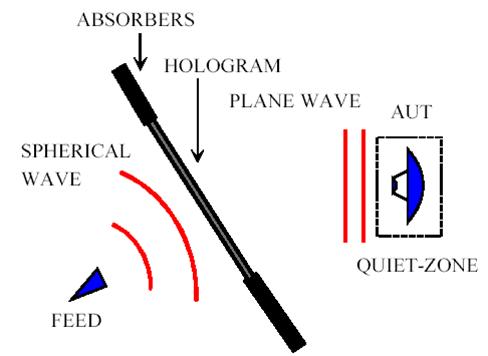
Figure 1. Schematic top-view of the hologram compact antenna test range setup.
Structure of the computer-generated amplitude hologram
Hologram structure consists:
- Ideally — of mm-wave transparent and totally blocking material
- In practice — of high-conductivity metal stripes on a low-loss dielectric film.
Holograms are manufactured by etching the pattern on copper plated Mylar film.
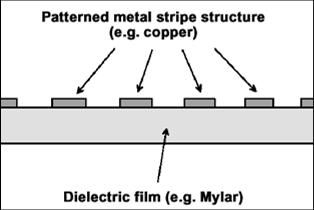
Figure 2. Structure of the computer-generated amplitude hologram.
Example: CATR based on a 92 cm hologram for 650 GHz
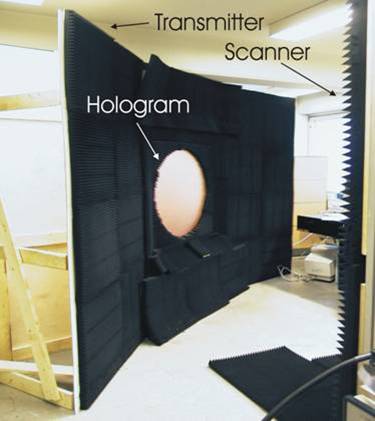
Figure 3. A 92-cm hologram for 650 GHz. The hologram is surrounded by absorbers. Locations of the transmitter (and feed horn), and the scanner for measuring plane wave quality are indicated.
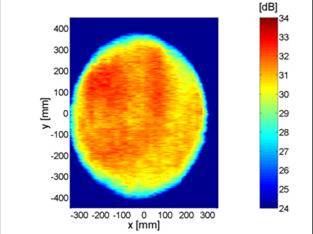 |
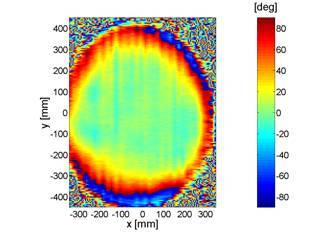 |
Figure 4. Measured quiet-zone field of the hologram at 644 GHz: xy-scan of the amplitude and phase.
Contact person: Juha Ala-Laurinaho


